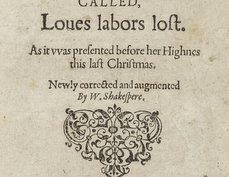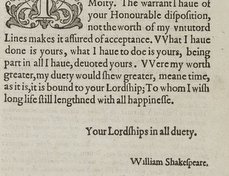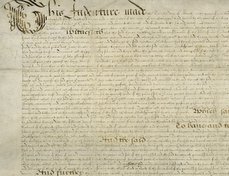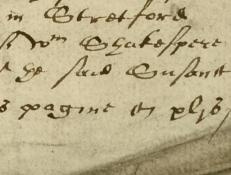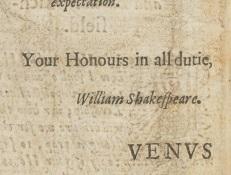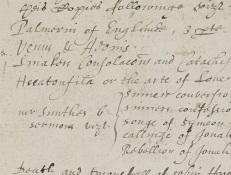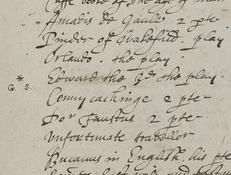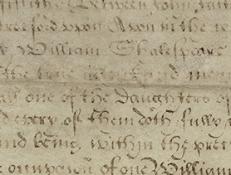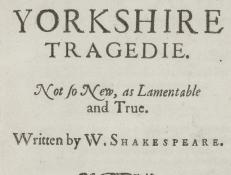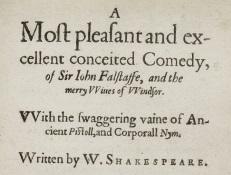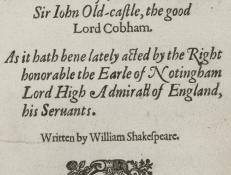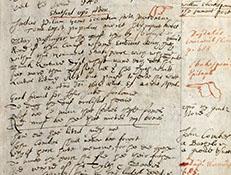Shakespeare Documented is still growing! Currently, two thirds of the descriptions and 98% of the images are available in the resource. Descriptive text will continue to be added, updated and expanded. Visit our About page to learn more about the project scope.
EXPLORE THE DOCUMENTS BY CATEGORY
SHAKESPEARE DOCUMENTED IS STILL GROWING
Descriptive content and transcriptions will continue to be added, updated and expanded. Check back for regular updates!
Filter the documents by tag(s)
post 1616
SHAKESPEARE DOCUMENTED IS STILL GROWING! Descriptive content and transcriptions will continue to be added, updated and expanded. Check back for regular updates!
April 18, 1617
SHAKESPEARE DOCUMENTED IS STILL GROWING! Descriptive content and transcriptions will continue to be added, updated and expanded. Check back for regular updates!
1617
William Stansby printed the eleventh edition of Venus and Adonis for William Barrett in 1617. William Leake had transferred the right to publish Venus and Adonis to Barrett earlier that year on February 16, 1617.
February 16, 1617
Venus and Adonis was the first of Shakespeare's works to be entered into the Stationers' Register and to be printed. It was originally entered into Liber B on April 18, 1593, by Richard Field.
March 2, 1618
Edward III was originally entered in the Stationers' Register on December 1, 1595, by publisher Cuthbert Burby.
February 10, 1618
On February 10, 1618, five years after William Shakespeare and his associates William Johnson, John Jackson, and John Heminges agreed to purchase the Blackfriars Gatehouse in 1613, Shakespeare’s trustees transferred the title of the Gatehouse to two new trustees.
1619
Thomas Pavier’s 1619 reissue of A Yorkshire Tragedie, now printed by William Jaggard, repeats the attribution to “W. Shakespeare” and places his name more prominently in capitals, but removes the information about playing company and theater.
1619
Published in 1619, this second edition of The Merry Wives of Windsor was part of the collection of Shakespeare’s plays commonly known as the Pavier Quartos. The publisher, Arthur Johnson, also published the first edition in 1602.
Imprint 1600, i.e. 1619
The 1619 quarto of Sir John Oldcastle Part 1 is the first to attribute the play to Shakespeare, some three years after his death.
1617- 1619
John Weever, a 17th century antiquary, spent approximately three decades gathering notes for his magisterial Ancient Funeral Monuments (1631). One of his surviving notebooks includes notes on Stratford-upon-Avon, with transcriptions from William Shakespeare’s funeral monument.

